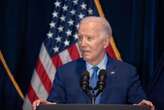Highway planners consider a lot of factors when building out new roads: What’s the landscape like? How many drivers will the road serve? What will it cost? How will it affect the local economy? In Minnesota, they’ll soon have to add climate impacts to that list.
A recently-passed law says that every proposed major highway project in Minnesota must go through an assessment to measure whether it will work against the state’s goals of reducing greenhouse gas emissions and driving rates. If the answer is yes, the planners have to adjust their designs to mitigate the climate effects before they can get federal or state funding to start laying asphalt. The new rule applies to all highway projects above a certain budget, and will cover 12,000 miles of the busiest roads, which account for about 60% of all the miles driven in the state.
A handful of other states are also moving toward incorporating climate goals into transportation planning, but Minnesota’s law is unique because it’s the first to include driving rates as a key metric. The state has a goal of reducing car travel by 20% per capita by 2050. New highway projects will have to prove they don’t imperil this goal, or the state’s 2050 net zero target. Given the inextricable link between how much we drive and the amount of carbon dioxide we spew into the atmosphere, this seems like a no-brainer.
“The goals are not to refrain from increasing greenhouse gasses and driving rides,” explains Sam Rockwell, executive director of nonprofit advocacy group Move Minnesota, which pushed for the legislation. “The goals are to decrease greenhouse gases and driving.”
So how do you build a highway that’s not bad for the environment? It’s all about ensuring your design contributes to the end goal of making it easier for people to walk, cycle, or take public transportation. “It really is about increasing mobility as a whole,” Rockwell says.
For example, perhaps alongside your new road, you also build dedicated bus lanes, or connect the road to bike paths and pedestrian walkways, or you rezone a nearby neighborhood so it’s more compact and walkable. Alternatively, a project can incorporate urban green space or reforestation. These are all acceptable “offset actions” under the law.
“You’re reducing harm out of projects, but you’re also moving funding into projects that are doing affirmative good,” Rockwell says. “So this isn’t just about saying we should drive less. You increase investments in transit, investments in biking, investments in walking over on the other side of the ledger.”
Rockwell is quick to point out that “this is not a carbon offset thing, or, like, you’re flying in an airplane and therefore you’re paying to plant a tree in Costa Rica.” Instead the idea was to keep the benefits local and transit-specific. Planners will be encouraged to deploy their offset actions in the areas most affected by their highway project. And if for some reason that’s not possible, they can focus instead on building offset projects in historically disadvantaged neighborhoods.
The law will come into effect in 2027, and in the meantime, the state’s Department of Transportation is working on developing a model to accurately measure a project’s climate impact, which is complicated. “You have to be able to understand how the whole state transportation system works together,” says Rockwell. A special advisory council made up of locals with relevant expertise—in climate science or pollution, for example—will review offset proposals and give the thumbs up or thumbs down.
Transportation remains the largest source of direct greenhouse gas emissions in the country, so bringing down America’s emissions overall can’t happen unless we think differently about how we get from point A to point B. The hope is that Minnesota’s law, if effective, can serve as a blueprint for other states, and Rockwell says he’s already heard from people in Illinois, New York, and Maryland hoping to couple transport improvement with climate targets. “The ultimate goal is to have a framework like this flow across the country,” he says.











No comments